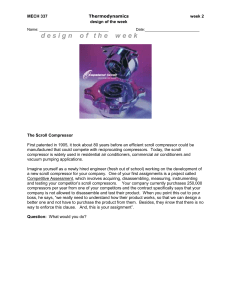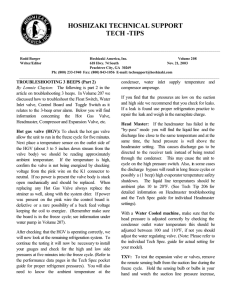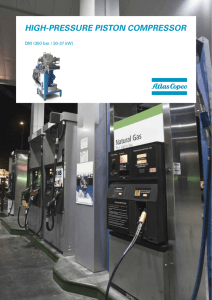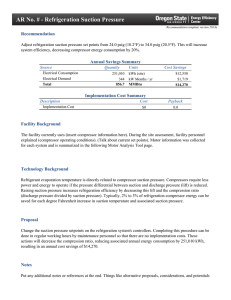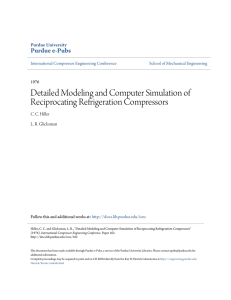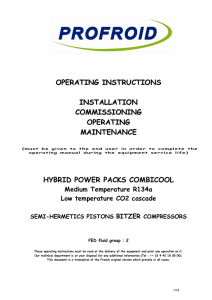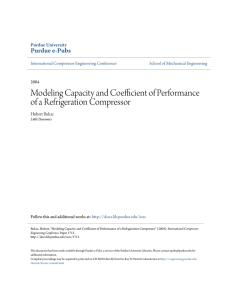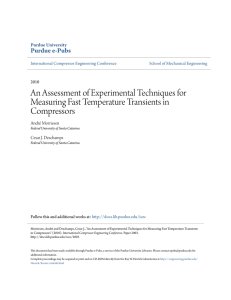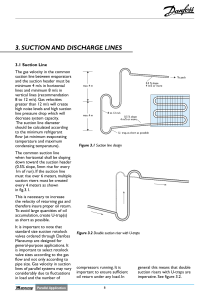Diagnostic guide to oil pressure problems on pump lubricated
advertisement
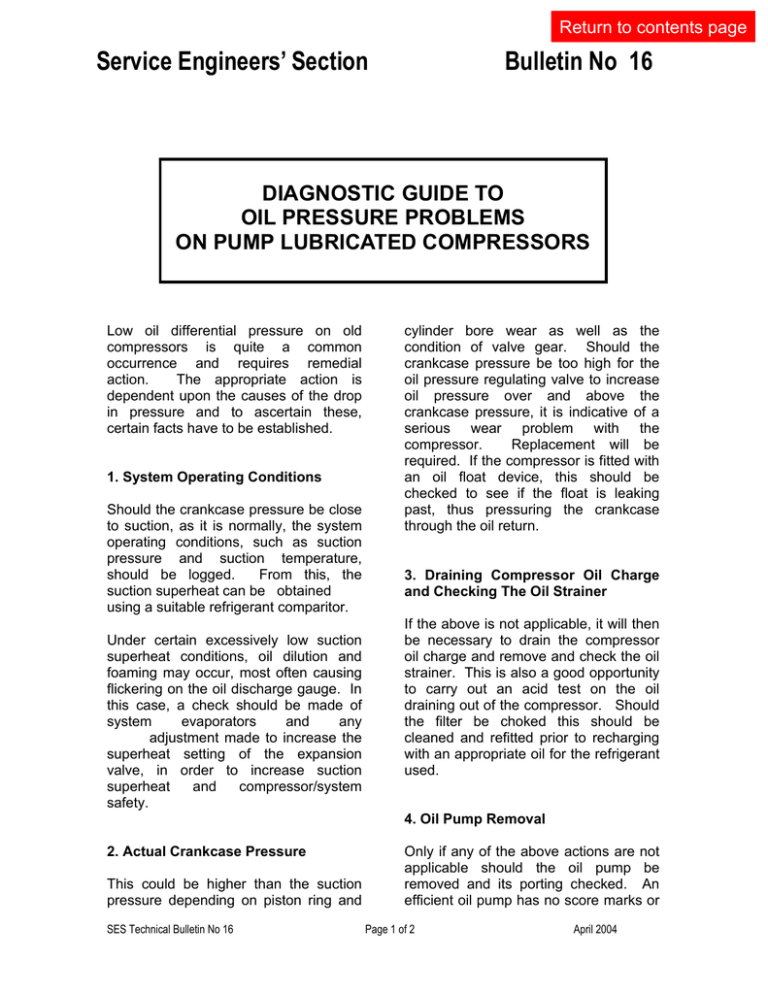
Return to contents page Service Engineers’ Section Bulletin No 16 DIAGNOSTIC GUIDE TO OIL PRESSURE PROBLEMS ON PUMP LUBRICATED COMPRESSORS Low oil differential pressure on old compressors is quite a common occurrence and requires remedial action. The appropriate action is dependent upon the causes of the drop in pressure and to ascertain these, certain facts have to be established. 1. System Operating Conditions Should the crankcase pressure be close to suction, as it is normally, the system operating conditions, such as suction pressure and suction temperature, should be logged. From this, the suction superheat can be obtained using a suitable refrigerant comparitor. Under certain excessively low suction superheat conditions, oil dilution and foaming may occur, most often causing flickering on the oil discharge gauge. In this case, a check should be made of system evaporators and any adjustment made to increase the superheat setting of the expansion valve, in order to increase suction superheat and compressor/system safety. cylinder bore wear as well as the condition of valve gear. Should the crankcase pressure be too high for the oil pressure regulating valve to increase oil pressure over and above the crankcase pressure, it is indicative of a serious wear problem with the compressor. Replacement will be required. If the compressor is fitted with an oil float device, this should be checked to see if the float is leaking past, thus pressuring the crankcase through the oil return. 3. Draining Compressor Oil Charge and Checking The Oil Strainer If the above is not applicable, it will then be necessary to drain the compressor oil charge and remove and check the oil strainer. This is also a good opportunity to carry out an acid test on the oil draining out of the compressor. Should the filter be choked this should be cleaned and refitted prior to recharging with an appropriate oil for the refrigerant used. 4. Oil Pump Removal 2. Actual Crankcase Pressure This could be higher than the suction pressure depending on piston ring and SES Technical Bulletin No 16 Only if any of the above actions are not applicable should the oil pump be removed and its porting checked. An efficient oil pump has no score marks or Page 1 of 2 April 2004 heavy wear on the outside of the rotor or inside rotor barrel, as this causes recirculation of oil across the oil pump and, therefore, lowers the oil differential pressure. However, this is not a common problem due to the high standard of filtration. An oil differential pressure of 1.5 bar should be achievable, even on a well used compressor. 5. Internal Oil Pressure Regulating Valve The internal oil pressure regulating valve is not easily accessible and further advice is required regarding any adjustments from the factory setting 1 Return to contents page fromthe manufacturer. It is quite a rare occurrence for a factory set oil pressure regulating valve to require adjustment. Therefore, all other actions described above should be carried out before embarking on such adjustments under advice from the compressor manufacturer. Following the above steps will solve the vast majority of potential problems on pump lubricated compressors. However, if problems are still being experienced, then further investigation will be required in conjunction with advice from the compressor manufacturer. 2 Oil pressure switch mounted (1) and with engineer’s gauges fitted (2). This Technical Bulletin is based on the Bitzer UK CPD Briefing Paper Number 001 by D.E. James. The Service Engineers’ Section has reproduced this Bulletin with the kind permission of Bitzer UK. SES Technical Bulletin No 16 Page 2 of 2 April 2004

